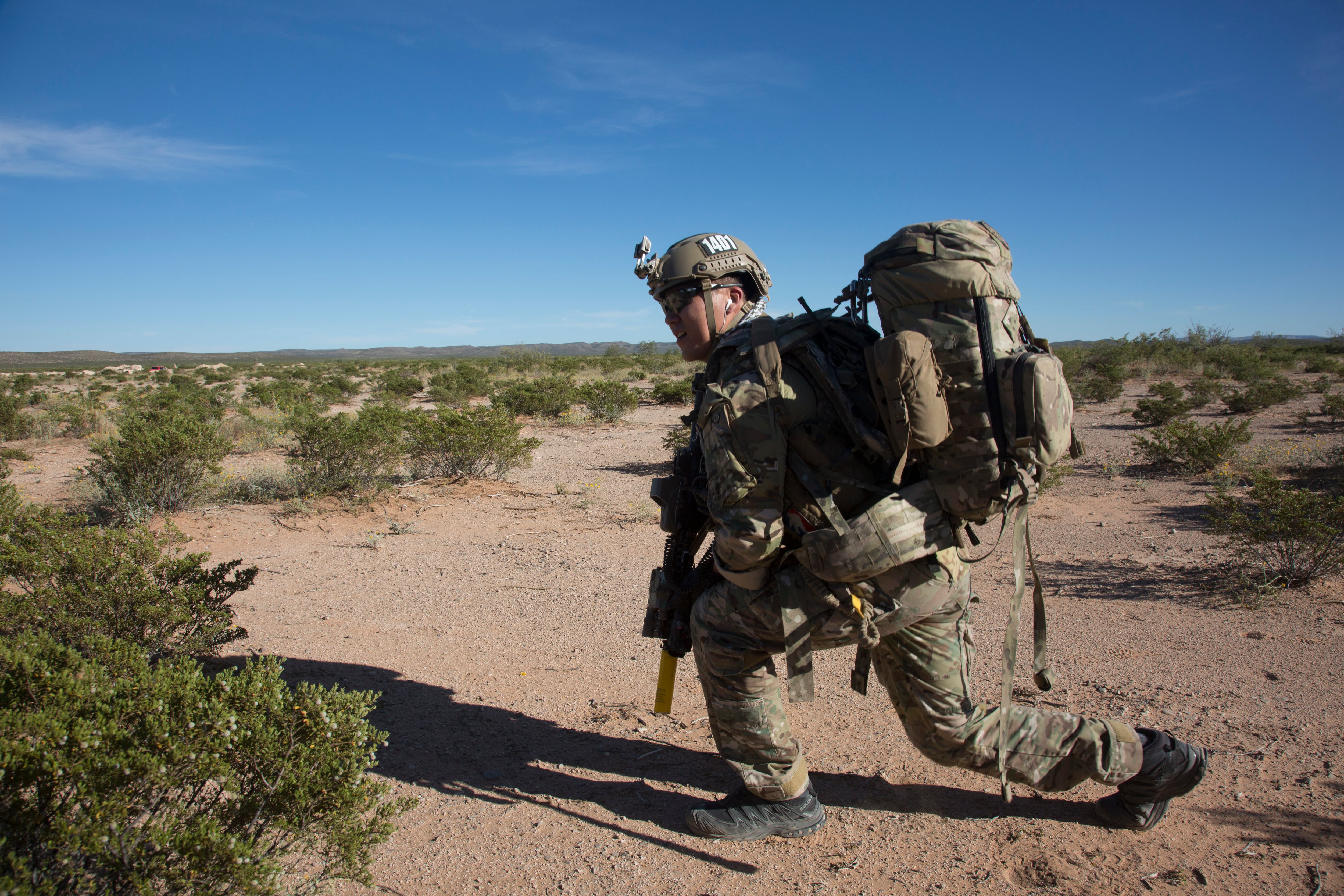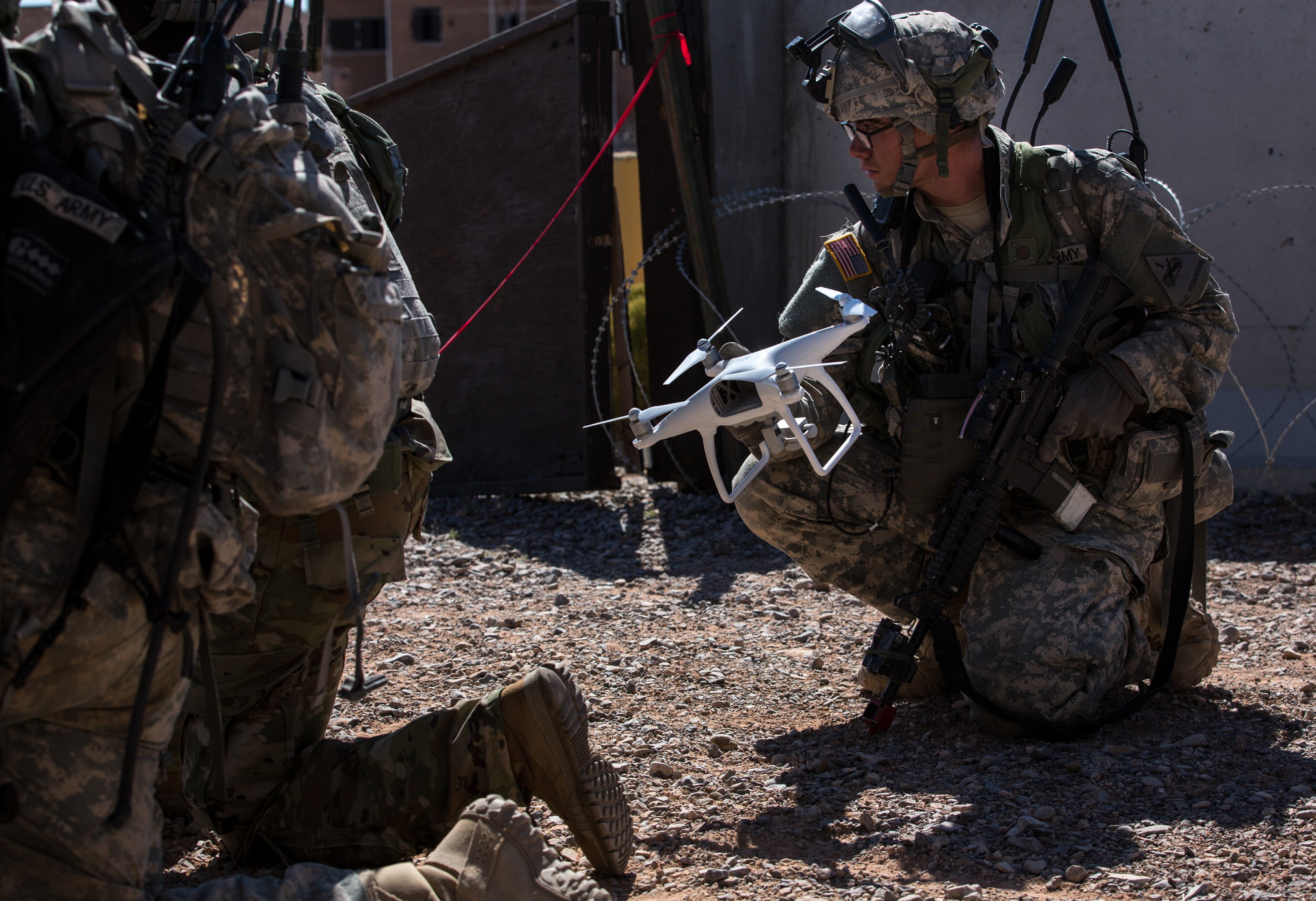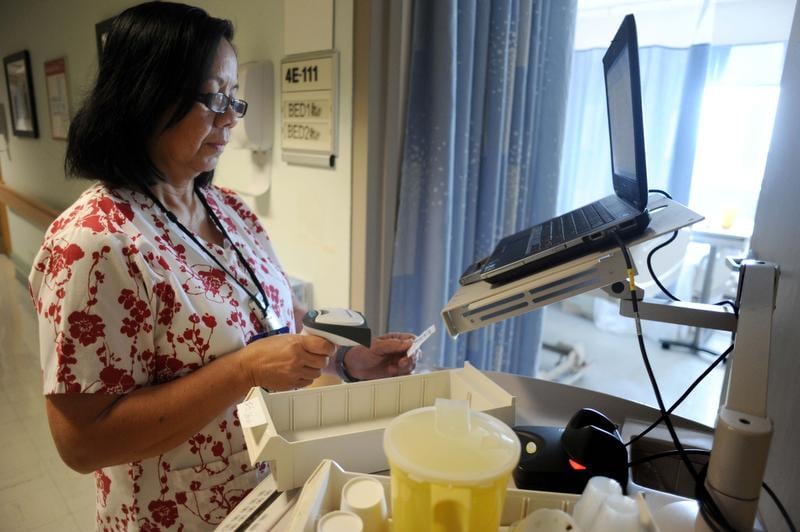More than 5,000 troops tried out dozens of warfighting capabilities in a desert exercise designed to give the Army feedback on new technologies before they are fielded across the force.
The inaugural Army Warfighting Assessment exercise seeks comments from soldiers on new concepts and capabilities, including robotics and unmanned systems, and how they work with multinational partners.
The AWA exercise ran Oct. 17-28 at Fort Bliss, Texas, and White Sands Missile Range and Holloman Air Force Base in New Mexico.
The idea evolved from the Army's Network Integration Evaluation, which gave soldiers a hands-on look at enhancements to tactical communications equipment.
"About two years ago, we realized we needed an exercise that was more flexible and adaptable" than the NIE, said Maj. Gen. Terrence McKenrick, commander of the Army's Brigade Modernization Command at Fort Bliss, Texas.
The main focus of the NIE exercises was network capability, so leaders had to make sure nothing interfered with the network, which made it hard to include multinational partners.
"We know we never deploy just as an Army," McKenrick said. "We deploy with partners, so we need an exercise that allows us to work with them."

U.S. Special Forces soldiers conduct a downed pilot simulation for the Army Warfighter Assessment (AWA) 17-1 exercise at Ft. Bliss, Texas, Oct. 18, 2016. The soldiers used new gear during the simulation so they could test the equipment's operational effectiveness.
Photo Credit: Pfc. Alexander Holmes/Army
The AWA highlights innovation and collaboration, he said.
U.S. troops joined with counterparts from other countries such as the United Kingdom, Australia, Canada and Italy.
The service members used 41 concepts and capabilities that were designed to meet 20 different warfighting challenges. The Army is seeking their feedback on capabilities such as robotics, unmanned systems and power systems.
Soldiers are testing unmanned vehicles that could follow one manned vehicle to minimize soldiers' exposure in dangerous areas.
"When you're in an operational environment, we could use these in high-threat areas where convoys are being targeted or attacked by IEDs," McKenrick said.

Soldiers assigned to 1st Battalion, 6th Infantry Regiment, retrieve an enemy drone while conducting an assault on an objective during the Army Warfighter Assessment (AWA) 17-1 exercise at Ft. Bliss, Texas, Oct. 23, 2016. The soldiers conducted training to assess operational effectiveness out in the field during AWA 17-1.
Photo Credit: Sgt. Steven Hitchcock/Army
Making the force more agile by minimizing equipment is another focus, he said.
Soldiers are testing microgrid power systems that allow them to meter and manage the power requirements.
"Over time, it reduces power requirements for the brigade tactical operations center," McKenrick said. "It used to require 18 generators to power, but it has reduced to four."
Not only has it cut down on the amount of necessary equipment, but fewer troops are needed to man and maintain it.
Army Spc. Rachel Wheeler, an intelligence analyst at Fort Bliss, said the exercise is a good way to work the kinks out of equipment or systems before they go out to the entire Army.
"When [soldiers] get out there and field this equipment, they're not dealing with the same problems we had," said Wheeler, who is with 2nd Brigade Combat Team, 1st Armored Division.
Wheeler said even though some troops prefer the old way of doing something, it's important to figure out how to make systems better.
"Especially if we're not learning and our enemies are," she said.
One suggestion Wheeler has for future AWA exercises is to include more units.
The training area should remain the same since it supports the operations well, she said, but a wider variety of troops should do the exercise there.
"A cavalry scout will have different points of view than an infantry commander or an armored commander," Wheeler said. "It does benefit the Army as far as giving new perspectives."
Charlsy is a Reporter and Engagement Manager for Military Times. Email her at cpanzino@militarytimes.com.





